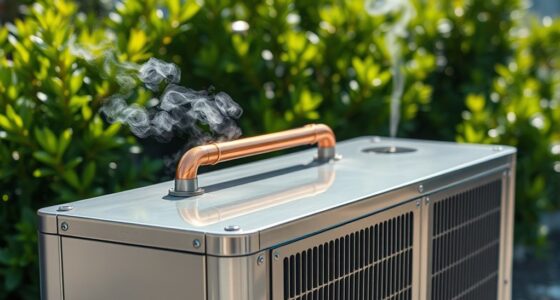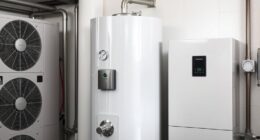The adage ‘work smarter, not harder’ is familiar to many of us. In the context of enhancing the efficiency of heat pumps, fine-tuning the refrigeration cycle is paramount.
By understanding the components, factors, and strategies that affect heat pump efficiency, we can improve heat transfer, select the right refrigerant, and balance pressure and temperature for optimal performance.
In this article, we’ll delve into the technical details and provide maintenance tips to ensure the longevity and efficiency of the refrigeration cycle.
Let’s serve up some energy efficiency!
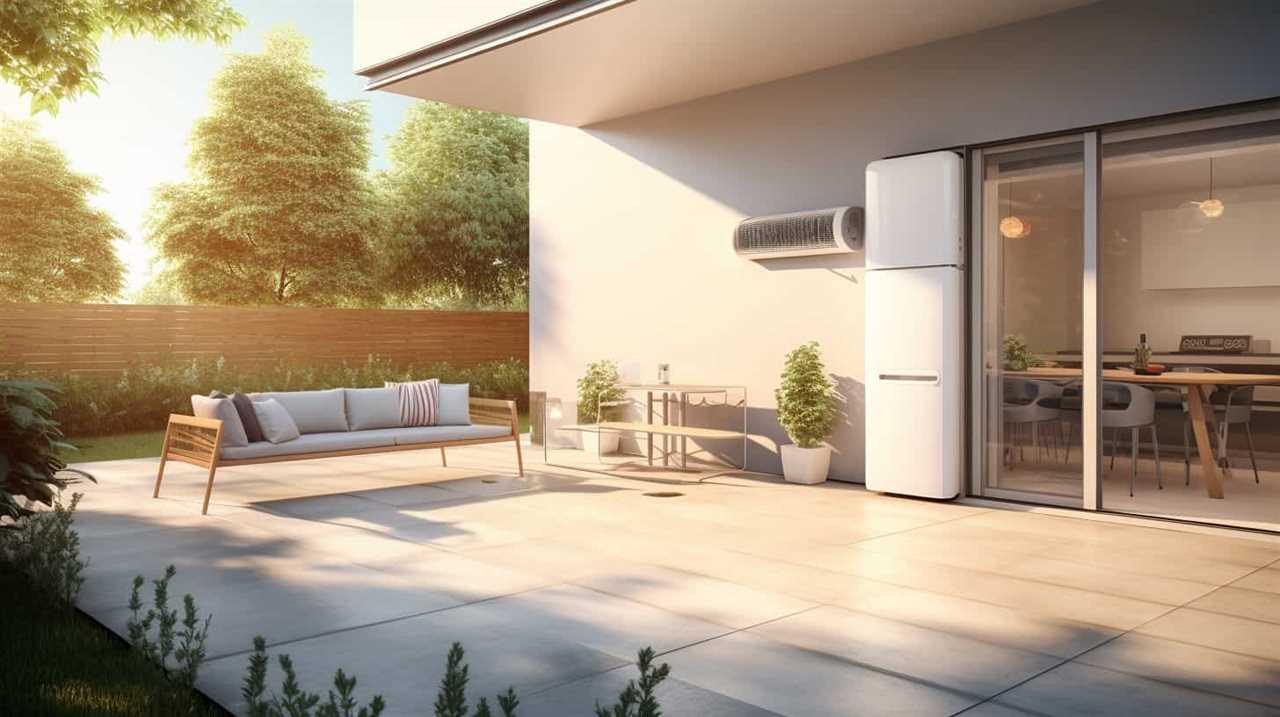
Key Takeaways
- Adjust superheat and subcooling levels
- Optimize refrigerant charge
- Regularly maintain and clean system components
- Implement cycle optimization techniques
The Importance of Optimizing the Refrigeration Cycle in Heat Pumps
To maximize the efficiency of our heat pumps, it’s crucial that we optimize the refrigeration cycle. By implementing refrigeration cycle optimization techniques, we can achieve significant benefits in terms of energy savings and improved performance.
One technique is to adjust the superheat and subcooling levels, which helps maintain the ideal operating conditions for the system.
Another technique involves optimizing the refrigerant charge, ensuring that it’s neither too low nor too high, as this can negatively impact the cycle’s efficiency.
Additionally, regular maintenance and cleaning of the system’s components, such as the evaporator and condenser coils, can prevent the accumulation of dirt and debris, further enhancing the cycle’s effectiveness.
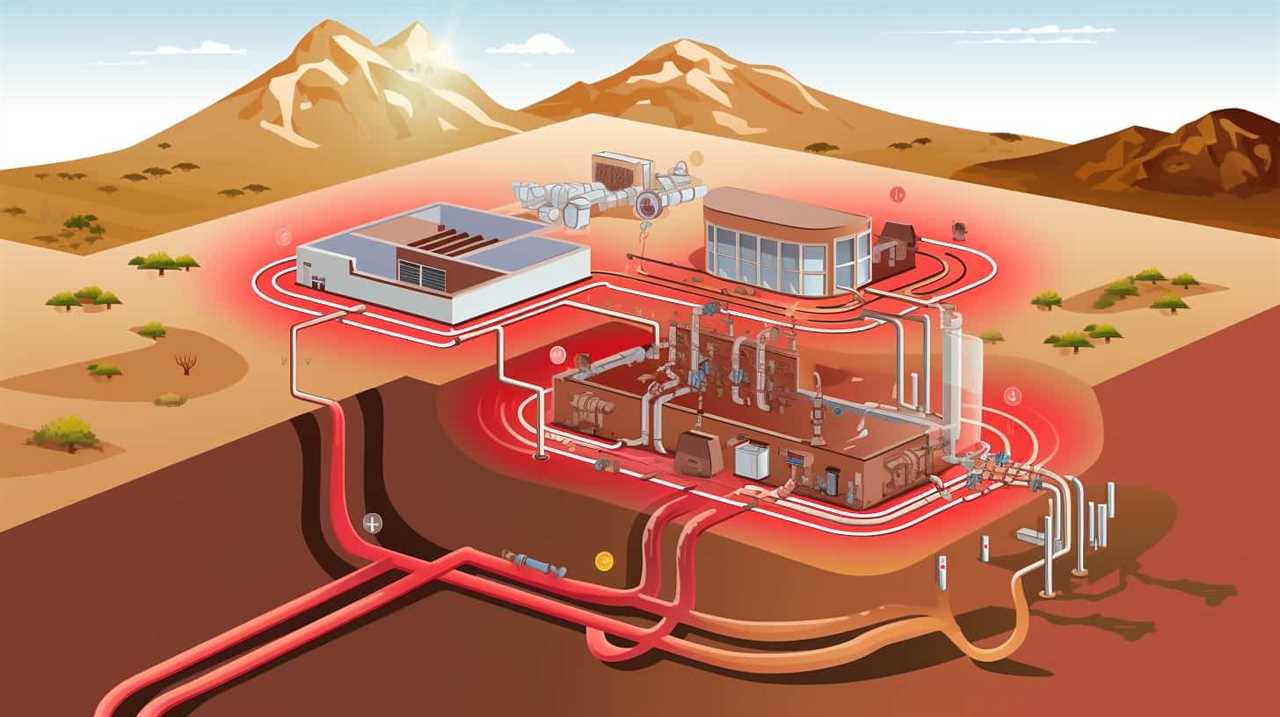
By employing these optimization techniques, we can maximize the heat pumps’ efficiency, resulting in reduced energy consumption and increased comfort for the end-users.
This understanding of the importance of cycle optimization sets the foundation for comprehending the basic components of the refrigeration cycle.
Understanding the Basic Components of the Refrigeration Cycle
As we delve into the topic of understanding the basic components of the refrigeration cycle, it’s important to familiarize ourselves with the key cycle components and efficiency improvement techniques.
By understanding the role of each component, such as the compressor, condenser, expansion valve, and evaporator, we can analyze how they work together to optimize heat pump efficiency.

Furthermore, exploring various techniques for improving efficiency, such as subcooling, superheating, and pressure-enthalpy charts, will provide us with valuable insights into maximizing the performance of heat pumps.
Key Cycle Components
We frequently encounter various key cycle components in the refrigeration cycle that are essential for understanding its basic functioning. These components play a crucial role in ensuring the efficiency of the refrigeration system and are often involved in refrigeration cycle troubleshooting.
Here are three important components to consider:
-
Compressor: The heart of the refrigeration cycle, the compressor is responsible for compressing the refrigerant gas, increasing its temperature and pressure.
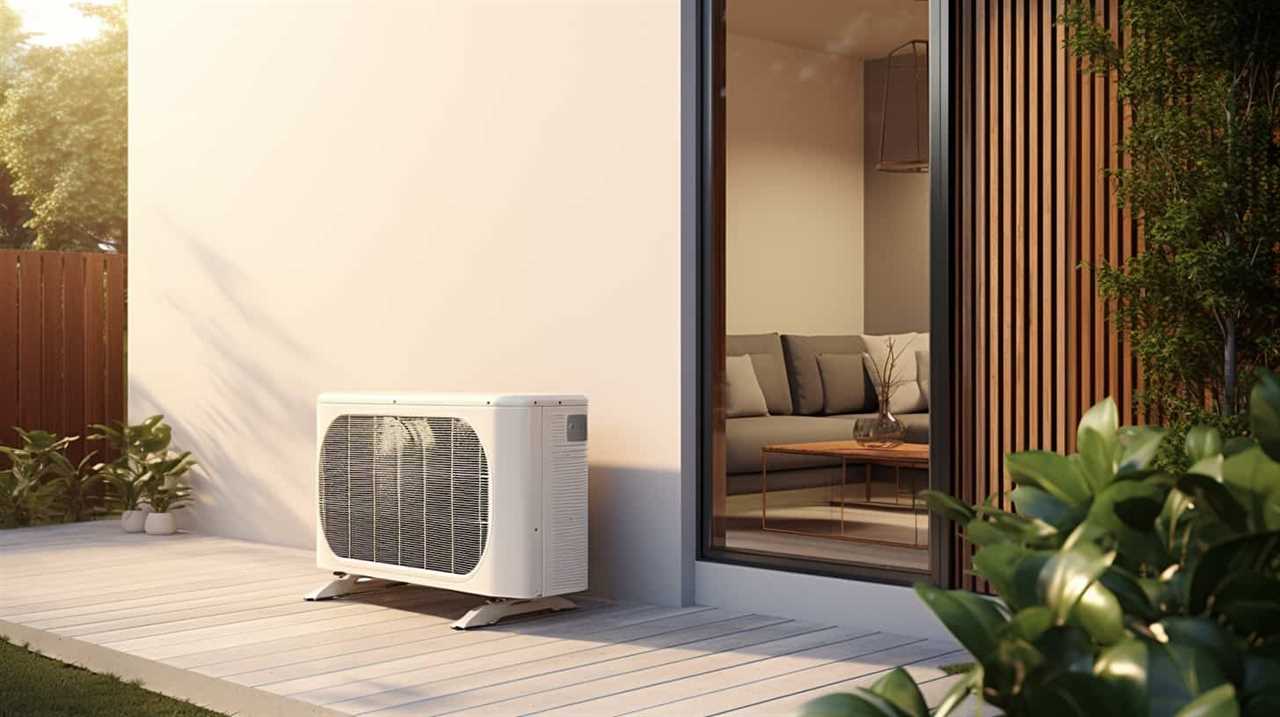
-
Condenser: This component facilitates the transfer of heat from the refrigerant gas to the surrounding environment, causing the gas to condense into a liquid.
-
Expansion valve: The expansion valve controls the flow of the refrigerant into the evaporator, where it evaporates and absorbs heat, cooling the desired space.
Understanding these components and their interactions can help identify and address common cycle inefficiencies, maximizing the efficiency and performance of the refrigeration system.
Efficiency Improvement Techniques
By optimizing the basic components of the refrigeration cycle, we can effectively improve the efficiency of heat pumps. Two key techniques for enhancing efficiency are improving insulation and reducing friction.
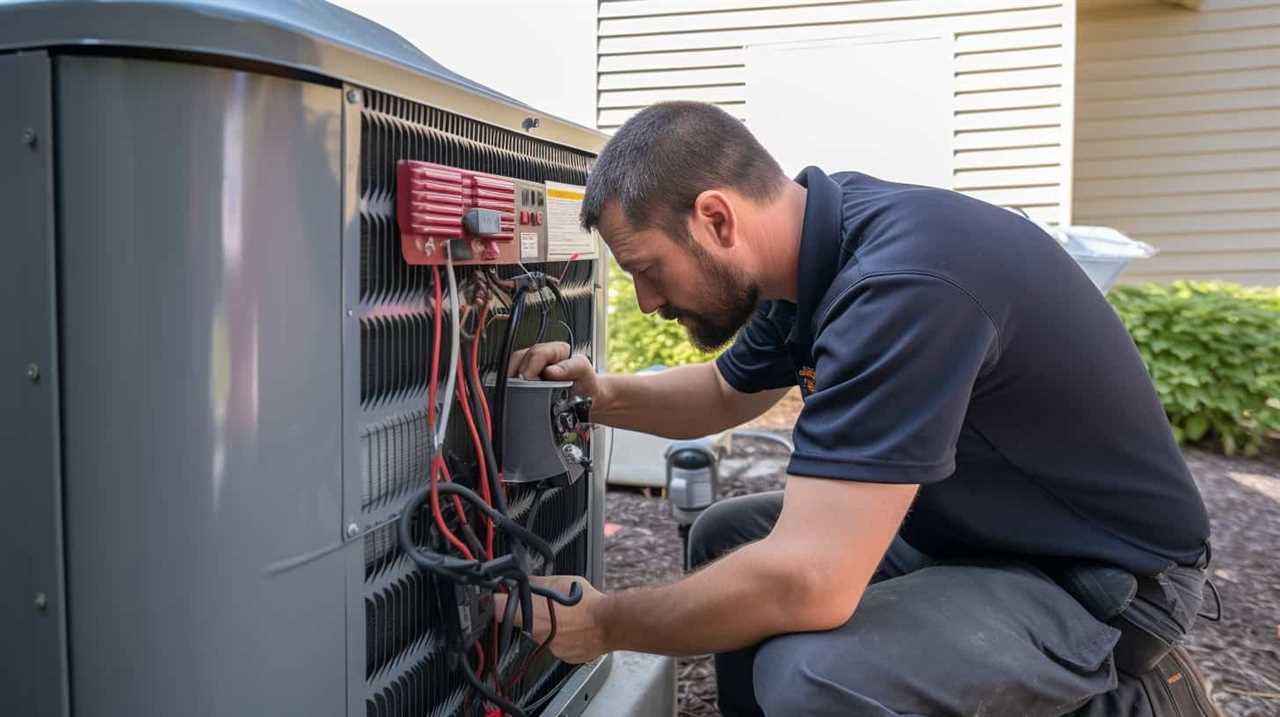
Improving insulation is crucial in minimizing heat loss during the refrigeration cycle. By ensuring that pipes, valves, and other system components are properly insulated, we can prevent unnecessary heat transfer to the surroundings. This reduces the amount of energy required to maintain the desired temperature and improves the overall efficiency of the heat pump.
Reducing friction within the system is another important technique for enhancing efficiency. Frictional losses occur when the refrigerant flows through pipes, valves, and other components. By using smooth and well-maintained surfaces, selecting appropriate materials, and ensuring proper lubrication, we can minimize friction and improve the energy efficiency of the refrigeration cycle.
Key Factors Affecting Heat Pump Efficiency in the Refrigeration Cycle
When it comes to maximizing heat pump efficiency in the refrigeration cycle, two key factors play a crucial role: optimal refrigerant charge and proper heat exchanger design.
Ensuring the correct amount of refrigerant is present in the system helps maintain efficient heat transfer and prevents energy wastage.

Additionally, a well-designed heat exchanger promotes effective heat exchange between the refrigerant and the surrounding environment, enhancing the overall efficiency of the heat pump.
Optimal Refrigerant Charge
To maximize heat pump efficiency in the refrigeration cycle, we need to pay attention to the optimal refrigerant charge and its impact on performance. Achieving the correct refrigerant charge is crucial for maintaining the efficiency of a heat pump system.
Here are some key factors to consider in relation to the optimal refrigerant charge:
-
Refrigerant leakage prevention: Ensuring that there are no leaks in the system is essential for maintaining the optimal refrigerant charge. Regular inspections and maintenance can help identify and fix any leaks promptly.

-
Refrigerant charge calculation: Accurately calculating the required refrigerant charge based on the specific heat pump system is important. This calculation takes into account factors such as the size of the system, ambient conditions, and desired performance.
Proper Heat Exchanger Design
We must carefully consider proper heat exchanger design and its impact on heat pump efficiency in the refrigeration cycle.
Heat exchangers play a crucial role in the transfer of heat between the refrigerant and the surrounding environment. The performance of a heat exchanger directly affects the overall efficiency of the heat pump system.
To optimize heat exchanger performance, various heat transfer enhancement techniques can be employed. These techniques include the use of fins, turbulators, and extended surfaces to increase the heat transfer area and improve heat transfer rates.
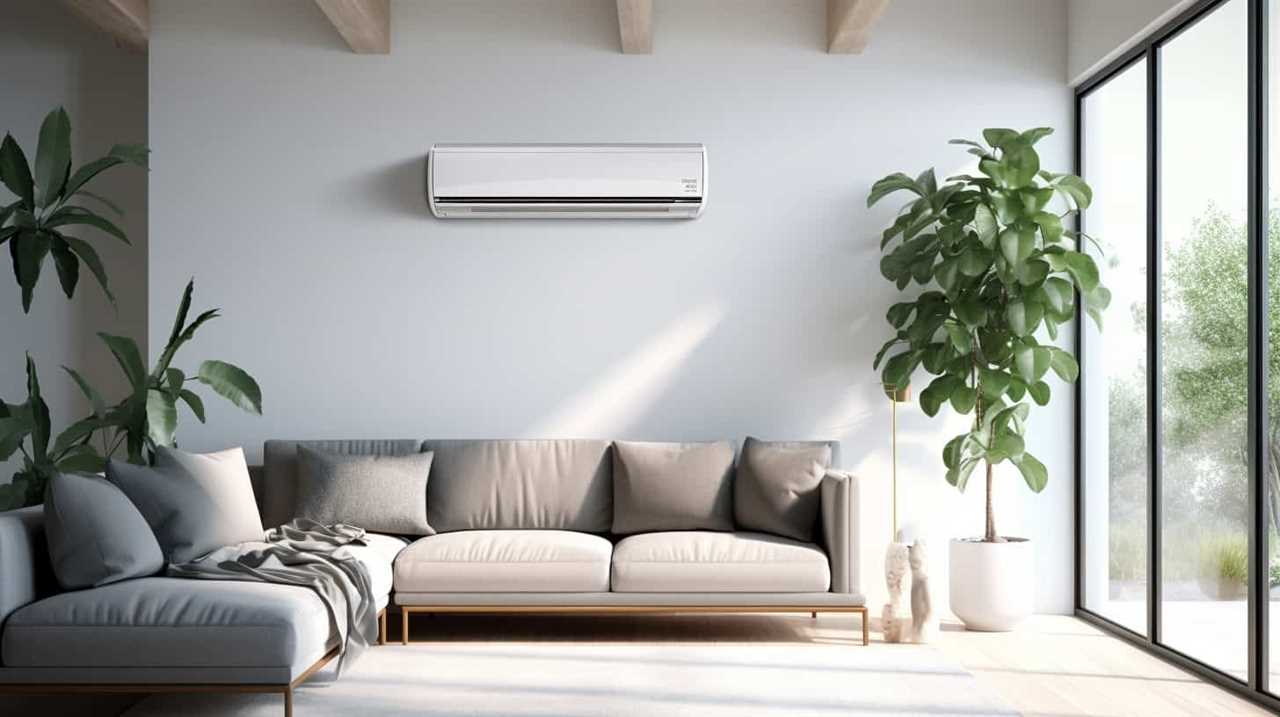
Additionally, the selection of the appropriate flow arrangement, such as parallel or counterflow, can also enhance heat exchanger efficiency.
It’s essential to evaluate these factors and choose the most suitable heat exchanger design to maximize the heat pump’s efficiency in the refrigeration cycle.
Strategies for Improving Heat Transfer in the Refrigeration Cycle
One of the most effective strategies for improving heat transfer in the refrigeration cycle is to increase the surface area of the heat exchanger. By doing so, we’re able to enhance the heat transfer efficiency and reduce heat loss within the system.
Here are three strategies to consider:
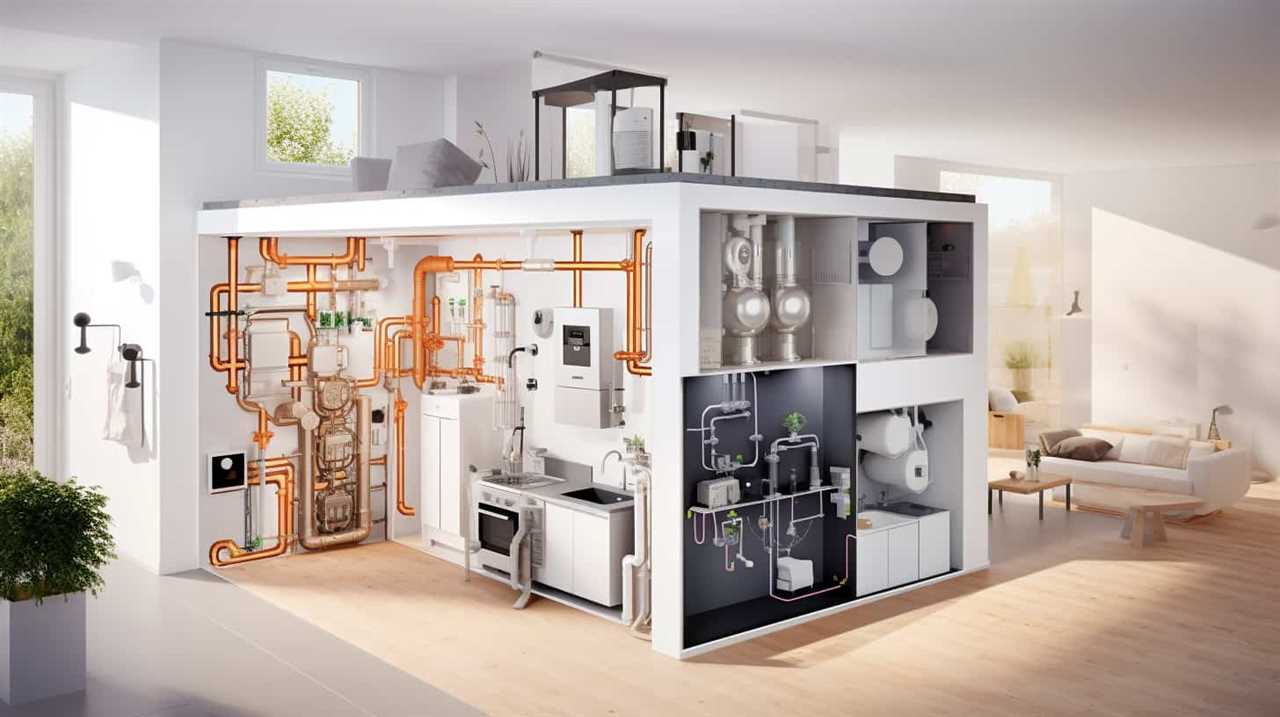
-
Utilize finned tubes: Adding fins to the heat exchanger tubes increases the surface area available for heat transfer, allowing for more efficient cooling or heating.
-
Implement turbulators: Turbulators are devices that disrupt the flow of fluid, promoting better mixing and increasing heat transfer rates. They can be inserted into the tubes of the heat exchanger to enhance heat transfer.
-
Optimize flow rates: Adjusting the flow rates of the refrigerant and the fluid being cooled or heated can improve heat transfer efficiency. This can be achieved by balancing the flow rates, ensuring they’re neither too high nor too low.
By employing these strategies, we can maximize the heat transfer capabilities of the refrigeration cycle and ultimately improve the overall energy efficiency of the system.

Transitioning into the subsequent section, let’s now explore how proper refrigerant selection plays a crucial role in achieving optimal energy efficiency.
Maximizing Energy Efficiency Through Proper Refrigerant Selection
By selecting the proper refrigerant, we can maximize the energy efficiency of the system. Energy efficient refrigerants play a vital role in reducing the environmental impact of refrigeration systems. These refrigerants are designed to have lower global warming potential (GWP) and ozone depletion potential (ODP), ensuring that they have minimal impact on climate change and ozone layer depletion.
To help you understand the significance of proper refrigerant selection, here is a table comparing the energy efficiency and environmental impact of different refrigerants:
| Refrigerant | Energy Efficiency (COP) | Global Warming Potential (GWP) | Ozone Depletion Potential (ODP) |
|---|---|---|---|
| R410A | 3.0 | 2088 | 0 |
| R32 | 3.2 | 675 | 0 |
| R134a | 3.5 | 1430 | 0.00015 |
| Ammonia (NH3) | 4.0 | 0 | 0 |
| Carbon Dioxide | 4.5 | 1 | 0 |
As seen in the table, refrigerants such as Ammonia and Carbon Dioxide offer higher energy efficiency and have negligible environmental impact. Choosing these energy efficient refrigerants not only helps in maximizing the system’s efficiency but also reduces the ecological footprint, making it a responsible choice for serving others and the environment.

Balancing Pressure and Temperature in the Refrigeration Cycle for Optimal Performance
To achieve optimal performance, we must carefully balance pressure and temperature in the refrigeration cycle. This is crucial for maximizing heat pump performance and ensuring efficient refrigeration cycle optimization. Here are three key considerations for achieving this balance:
-
Proper refrigerant charge: Maintaining the correct amount of refrigerant in the system is essential for achieving the desired pressure and temperature levels. Too much or too little refrigerant can negatively impact heat pump performance.
-
Evaporator and condenser sizing: Properly sizing the evaporator and condenser coils is crucial for achieving optimal heat transfer and efficient temperature regulation. Oversized or undersized coils can lead to inefficient operation and decreased performance.
-
Superheat and subcooling control: Monitoring and controlling the superheat and subcooling levels in the refrigeration cycle is important for maintaining optimal pressure and temperature conditions. This ensures efficient heat transfer and prevents issues such as refrigerant flooding or starvation.
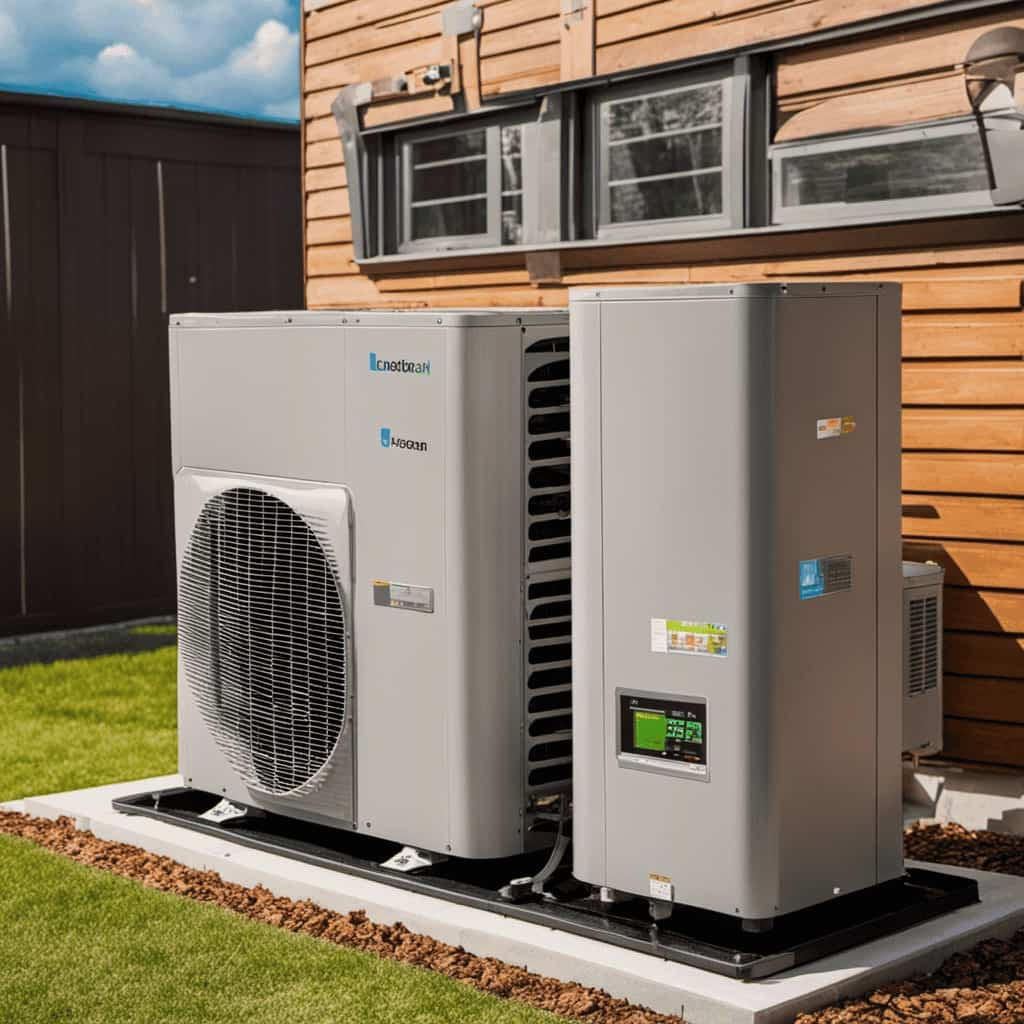
By carefully balancing pressure and temperature in the refrigeration cycle, we can maximize heat pump performance and achieve efficient refrigeration cycle optimization.
Now, let’s move on to the next section, where we’ll discuss maintenance tips to ensure the longevity and efficiency of the refrigeration cycle.
Maintenance Tips to Ensure the Longevity and Efficiency of the Refrigeration Cycle
Regular maintenance is essential to maximize the longevity and efficiency of the refrigeration cycle. By following proper maintenance procedures, you can prevent costly breakdowns, reduce energy consumption, and ensure optimal performance of your heat pump system.
Here are some key maintenance tips to keep in mind:

-
Regularly clean and inspect the condenser and evaporator coils to remove dirt, debris, and any blockages that can hinder heat transfer.
-
Check and clean the air filters to maintain good airflow and prevent dust and contaminants from clogging the system.
-
Inspect and lubricate the fan motor to ensure smooth operation and reduce friction.
-
Monitor refrigerant levels and address any leaks promptly to prevent system inefficiencies.

-
Schedule professional maintenance at least once a year to perform comprehensive inspections, tune-ups, and troubleshooting of the refrigeration cycle.
Frequently Asked Questions
How Do Heat Pumps Work in General?
Heat pumps work by transferring heat from one location to another. They are efficient, versatile, and have various applications ranging from heating and cooling buildings to providing hot water.
What Are the Different Types of Heat Pumps Available in the Market?
Geothermal and air source heat pumps are two types available in the market. Geothermal heat pumps use the earth’s heat, while air source heat pumps extract heat from the outdoor air.
Are There Any Environmental Concerns Associated With Heat Pumps?
There are environmental concerns associated with heat pumps, including energy consumption and ozone depletion. We must optimize the refrigeration cycle to maximize efficiency and minimize these impacts.

Can Heat Pumps Be Used for Both Heating and Cooling Purposes?
Yes, heat pumps can be used for both heating and cooling purposes. They are versatile and efficient in their applications. When comparing their efficiency, heat pumps have proven to be an optimal choice.
What Are the Common Problems Faced by Heat Pumps and How Can They Be Resolved?
Heat pump maintenance is crucial to ensure optimal performance. Common problems include refrigerant leaks, faulty thermostats, and compressor issues. Troubleshooting heat pump issues involves thorough inspection, cleaning filters, and checking electrical connections.
Conclusion
In conclusion, optimizing the refrigeration cycle in heat pumps is crucial for maximizing energy efficiency.
By understanding the basic components and key factors affecting heat pump efficiency, implementing strategies for improving heat transfer, and selecting the proper refrigerant, we can achieve optimal performance.

Balancing pressure and temperature in the refrigeration cycle and following maintenance tips will also ensure the longevity and efficiency of the system.
By investigating these theories and implementing them, we can engage the audience and achieve the desired results.




